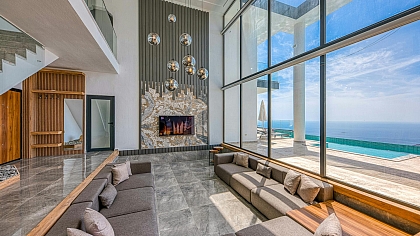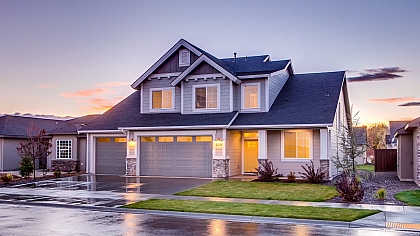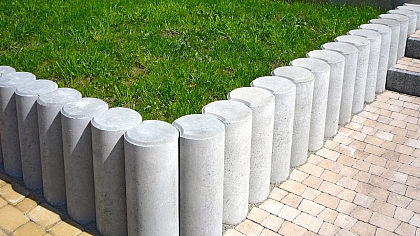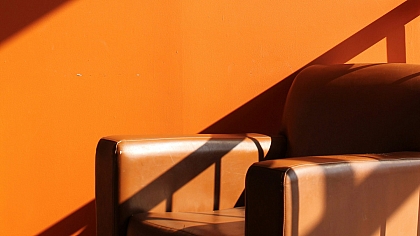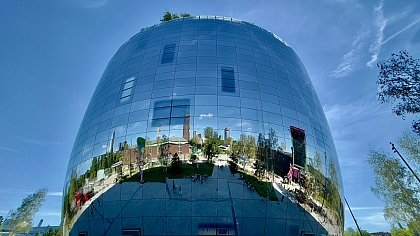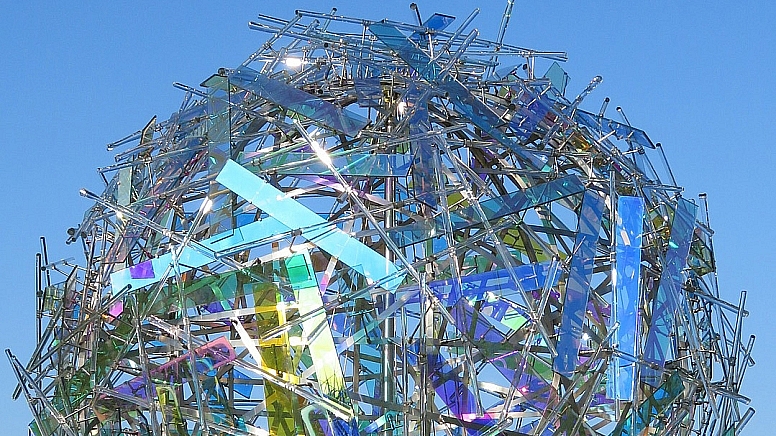
Translucent Elegance: Exploring Plexiglass Innovations in Modern Architecture
Plexiglass, also known as acrylic glass or PMMA (polymethyl methacrylate), has revolutionized modern architecture with its unique combination of aesthetic appeal and functional benefits.
Initially developed in the early 20th century, plexiglass has evolved from a mere substitute for glass to a preferred material in various architectural applications. Its versatility, durability, and optical clarity have made it an essential element in contemporary design, enabling architects to push the boundaries of creativity while addressing practical concerns.
Importance and Relevance in Modern Design
In today's architectural landscape, the demand for materials that offer both beauty and performance is higher than ever. Plexiglass meets this demand by providing a lightweight, shatter-resistant alternative to traditional glass, suitable for a wide range of applications. From residential homes to large commercial structures and public spaces, plexiglass contributes to the creation of visually striking and functional environments. Its ability to be moulded, coloured, and textured expands its utility, making it a vital component in sustainable and innovative architectural solutions.
The following sections will delve into the historical context of plexiglass, its properties, and its diverse applications in modern architecture, supported by detailed case studies and an examination of future trends. This comprehensive exploration will highlight the transformative impact of plexiglass on contemporary design practices.
Historical Context of Plexiglass in Architecture
Early Uses and Development
Plexiglass, or PMMA, was first developed in 1928 and brought to market by Rohm and Haas Company in 1933 under the brand name Plexiglas. Initially, its applications were primarily industrial and military, including use in aircraft windows, canopies, and submarine periscopes during World War II. Its lightweight, shatter-resistant nature made it an ideal material for these purposes.
As architects and designers began to recognize the potential of plexiglass for more aesthetic and structural applications, it gradually made its way into architectural use. Early architectural applications often focused on functional elements such as skylights and windows, where transparency and durability were significant advantages.
Evolution Over Time
The post-war period saw a surge in the use of new materials and technologies in architecture. Plexiglass started to be appreciated not only for its functional properties but also for its aesthetic possibilities. The 1960s and 1970s marked a period of experimentation, where plexiglass was used in avant-garde and modernist architecture, contributing to bold, innovative designs.
During this time, architects began to explore its potential in creating seamless, light-filled spaces. The ability to mould and shape plexiglass allowed for more fluid and organic forms, which aligned well with the architectural trends of the era. Its use expanded from windows and skylights to larger structural elements and decorative features.
The 21st century has seen plexiglass solidify its place in modern architecture. Advancements in manufacturing and processing have enhanced its properties, making it more durable, UV-resistant, and available in various finishes and colours. Contemporary architects now use plexiglass to achieve both functional and artistic goals, creating structures that are not only practical but also visually stunning.
Properties and Advantages of Plexiglass
Physical Properties
Plexiglass, or PMMA, is renowned for its unique set of physical properties that distinguish it from traditional glass and other materials. These properties include:
- Lightweight: Plexiglass is significantly lighter than glass, typically weighing about half as much. This reduces the load on structures and makes it easier to handle and install.
- Transparency: With a light transmission rate of up to 92%, plexiglass is exceptionally clear, offering optical clarity that rivals or surpasses that of glass.
- Impact Resistance: Plexiglass is much more impact-resistant than glass. It is less likely to shatter, which enhances safety in applications where breakage could pose a risk.
- Weather Resistance: Plexiglass can withstand harsh weather conditions without yellowing or losing its clarity. Its UV resistance makes it suitable for both indoor and outdoor applications.
- Thermal Insulation: Plexiglass provides good thermal insulation properties, helping to regulate temperatures and improve energy efficiency in buildings.
Aesthetic Qualities

The aesthetic versatility of plexiglass allows architects to explore a wide range of design possibilities. Key aesthetic qualities include:
- Colour and Finish Options: Plexiglass can be produced in various colours and finishes, including transparent, translucent, and opaque options. This flexibility allows for creative and custom design solutions.
- Formability: The material can be easily moulded, cut, and shaped into complex geometries, enabling the creation of unique architectural features and forms.
- Surface Treatments: Plexiglass can be treated to achieve different textures and finishes, such as frosted, patterned, or anti-reflective surfaces. These treatments can enhance both the functional and visual aspects of a design.
Functional Benefits
Beyond its physical and aesthetic properties, plexiglass offers several functional advantages that make it a preferred material in modern architecture:
- Safety: Its shatter-resistant nature reduces the risk of injury from broken glass, making it an ideal choice for applications where safety is paramount, such as in schools, hospitals, and public buildings.
- Maintenance: Plexiglass is easy to clean and maintain. Its resistance to weathering and chemicals means that it retains its appearance and functionality over time with minimal upkeep.
- Versatility: Suitable for a wide range of applications, plexiglass can be used in windows, skylights, partitions, railings, façades, and more. Its adaptability allows it to meet diverse architectural needs.
- Energy Efficiency: Its thermal properties contribute to energy efficiency, helping to reduce heating and cooling costs. This is particularly important in sustainable building design.
Acoustic Properties
An often overlooked benefit of plexiglass is its acoustic insulation properties. While not as soundproof as some specialized materials, it can effectively reduce noise transmission, making it a useful option for creating quiet, private spaces within busy environments.
Innovative Applications of Plexiglass
Residential Projects
Plexiglass has become increasingly popular in residential architecture, where its aesthetic and functional benefits are highly valued. Key applications in this context include:
- Skylights and Roof Panels: Plexiglass skylights and roof panels allow natural light to flood interior spaces without the weight and fragility of glass. Their high-impact resistance ensures durability and safety.
- Interior Partitions and Walls: In open-plan living areas, plexiglass partitions can define spaces without obstructing light or views. Frosted or tinted versions provide privacy while maintaining a modern aesthetic.
- Balustrades and Railings: Clear plexiglass balustrades on staircases and balconies offer an unobstructed view, enhancing the sense of space and openness. They also add a sleek, contemporary look to the home.
- Furniture and Decorative Elements: Designers are increasingly incorporating plexiglass into furniture and décor. Tables, chairs, shelves, and even artwork made from plexiglass add a touch of modern elegance.
Commercial Buildings
In commercial architecture, plexiglass is used to create visually appealing and functional spaces that cater to various needs:
- Façades and Curtain Walls: Plexiglass can be used for entire building façades or curtain walls, offering transparency and a modern aesthetic. Its lightweight nature reduces the structural load, allowing for more innovative designs.
- Signage and Display Panels: Plexiglass is ideal for commercial signage and display panels due to its clarity and ease of fabrication. It can be backlit to create striking visual effects, making it perfect for retail environments.
- Office Partitions and Cubicles: In office settings, plexiglass partitions create private workspaces while maintaining an open, collaborative atmosphere. They can be customized with frosted or coloured finishes to enhance the design.
- Atriums and Lobby Areas: Large plexiglass panels are often used in atriums and lobbies to create bright, welcoming spaces. Their high light transmission and durability make them an excellent choice for high-traffic areas.
Public and Institutional Spaces

Plexiglass is also extensively used in public and institutional buildings, where its durability and safety features are crucial:
- Protective Barriers and Enclosures: In museums, libraries, and other public spaces, plexiglass is used to create protective barriers and enclosures for exhibits and artefacts. Its clarity ensures that displays are visible while being protected.
- Sound Barriers: Plexiglass sound barriers are employed in busy public spaces like airports and train stations to reduce noise pollution while maintaining transparency and a modern look.
- Educational Facilities: Schools and universities utilize plexiglass for windows, doors, and partitions, benefiting from its safety features and ease of maintenance.
- Healthcare Facilities: In hospitals and clinics, plexiglass is used for partitions, protective barriers, and even medical equipment housings due to its hygienic properties and resistance to frequent cleaning and disinfection.
Outdoor Applications
The use of plexiglass extends to various outdoor applications where its weather resistance and durability are essential:
- Greenhouses and Conservatories: Plexiglass panels are used in greenhouses and conservatories to provide clear, UV-resistant enclosures that promote plant growth while being durable and lightweight.
- Canopies and Shelters: Plexiglass canopies and shelters offer protection from the elements without blocking light. They are commonly used in bus stops, patios, and other outdoor structures.
- Signage and Information Boards: Outdoor signage and information boards made from plexiglass are durable and weather-resistant, ensuring long-lasting clarity and readability.
These innovative applications of plexiglass in different architectural contexts demonstrate its versatility and effectiveness in enhancing both aesthetics and functionality.
Case Studies of Notable Plexiglass Projects
Case Study 1: Residential Use - The Glass House
Project Overview: The Glass House in New Canaan, Connecticut, designed by renowned architect Philip Johnson, is a modern residential project that exemplifies the seamless integration of plexiglass into a home's architecture. Located in a suburban setting, the house utilizes plexiglass to create a light-filled, transparent living space that merges indoor and outdoor environments.
Design and Implementation:
- Façade and Windows: The house features extensive use of plexiglass in its façade, with floor-to-ceiling plexiglass windows that offer unobstructed views of the surrounding landscape. These windows are designed to maximize natural light while providing excellent thermal insulation.
- Interior Partitions: Inside the house, plexiglass partitions are used to define different living areas without breaking the visual flow. Frosted plexiglass in bathrooms and bedrooms offers privacy while maintaining the overall transparency and lightness of the design.
- Skylights: Strategically placed plexiglass skylights allow daylight to penetrate deep into the interior spaces, reducing the need for artificial lighting and creating a vibrant, welcoming atmosphere.
Results and Benefits:
- Aesthetic Appeal: The use of plexiglass in The Glass House creates a modern, elegant aesthetic that enhances the visual connection with the outdoors.
- Energy Efficiency: The high thermal insulation properties of plexiglass contribute to the home's energy efficiency, helping to maintain comfortable indoor temperatures throughout the year.
- Durability and Safety: Plexiglass's durability and shatter resistance ensure the home's longevity and safety, making it a practical choice for residential applications.
Case Study 2: Commercial Application - The Cube Office Building

Project Overview: The Cube Office Building, designed by Ken Shuttleworth’s architectural firm Make Architects, is a state-of-the-art commercial structure incorporating plexiglass extensively. The building in Birmingham, UK, aims to provide a modern, transparent workspace that fosters productivity and collaboration.
Design and Implementation:
- Curtain Wall System: The building's exterior features a plexiglass curtain wall system that creates a sleek, modern façade. This system allows for large, uninterrupted panes of plexiglass, providing excellent natural light and expansive views of the cityscape.
- Interior Offices and Meeting Rooms: Within the building, plexiglass is used for office partitions and meeting room walls. Clear and frosted plexiglass panels offer privacy and sound insulation while maintaining an open, airy feel.
- Lobby and Atrium: The lobby and central atrium are designed with plexiglass skylights and panels, creating a bright, welcoming entrance area that connects visually to the different floors of the building.
Results and Benefits:
- Enhanced Work Environment: The abundant natural light and transparent partitions create a stimulating and collaborative work environment, which is highly valued in modern office design.
- Energy Savings: The use of plexiglass contributes to significant energy savings by reducing the need for artificial lighting and enhancing the building's overall thermal performance.
- Modern Aesthetic: The sleek, modern aesthetic achieved through the use of plexiglass aligns with the building's cutting-edge design and branding.
Case Study 3: Public Space Integration - The Plexiglass Pavilion
Project Overview: The Plexiglass Pavilion, designed by the architectural firm Sasaki Associates, is a public structure located in the DeCordova Sculpture Park and Museum in Lincoln, Massachusetts. Designed as a multipurpose space for community events, exhibitions, and leisure activities, the pavilion showcases the versatility and beauty of plexiglass in a public setting.
Design and Implementation:
- Roof and Canopy: The pavilion features a large plexiglass roof that provides shelter while allowing natural light to illuminate the interior space. The transparency of the roof creates a light, open atmosphere.
- Exterior Walls: Clear plexiglass walls surround the pavilion, offering panoramic views of the park while protecting visitors from the elements. These walls can be opened or closed depending on weather conditions and the specific needs of events.
- Interactive Displays: Inside the pavilion, plexiglass is used for protective covers on interactive displays and information panels, ensuring durability and clear visibility for visitors.
Results and Benefits:
- Community Engagement: Thanks to its inviting, transparent design, the pavilion has become a popular destination for community gatherings and events.
- Durability and Maintenance: The use of plexiglass ensures the pavilion's durability and ease of maintenance, making it a cost-effective solution for a public structure.
- Visual Integration: The transparent walls and roof seamlessly integrate the pavilion with the surrounding park, enhancing the overall aesthetic and user experience.
Technical Considerations and Challenges
Structural Integrity and Load-Bearing Capacity
While plexiglass is prized for its transparency and lightweight nature, ensuring its structural integrity in architectural applications is critical. Key considerations include:
- Load-Bearing Capacity: Plexiglass is not inherently load-bearing and requires support structures. Engineers must carefully calculate the load-bearing requirements and design appropriate framing systems to support plexiglass panels, especially in large installations like façades or canopies.
- Thickness and Strength: The thickness of plexiglass panels must be selected based on the specific application and expected loads. Thicker panels provide greater strength and impact resistance, making them suitable for areas with higher stress or potential impact.
- Joint and Connection Design: The connections and joints between plexiglass panels and supporting structures must be designed to accommodate thermal expansion and contraction. Flexible gaskets and specialized adhesives are often used to ensure secure, weather-tight connections.
Installation Techniques
Proper installation is crucial to maximize the performance and longevity of plexiglass in architectural applications. Installation considerations include:
- Cutting and Shaping: Plexiglass can be cut and shaped using standard tools, but care must be taken to avoid cracking or chipping. Laser cutting and CNC machining offer precision and smooth edges, reducing the risk of damage.
- Mounting Systems: Various mounting systems, such as frameless glazing, spider fittings, and aluminium profiles, can be used to install plexiglass panels. The choice of system depends on aesthetic preferences and structural requirements.
- Handling and Transportation: Plexiglass panels must be handled and transported with care to prevent scratches and other damage. Protective films and proper packing materials are essential during these processes.
Maintenance and Longevity
Plexiglass requires minimal maintenance, but specific practices can help preserve its clarity and appearance over time:
- Cleaning: Regular cleaning with mild soap and water or specialized plexiglass cleaners is recommended. Abrasive cleaners or rough cloths should be avoided as they can scratch the surface.
- UV Protection: Although modern plexiglass is UV-resistant, prolonged exposure to direct sunlight can eventually cause some degradation. Applying UV-protective coatings or films can extend the material's lifespan.
- Scratch Repair: Minor scratches can be polished out using commercial scratch removers or polishing kits designed for plexiglass. For deeper scratches, professional repair may be required.
Acoustic Performance
While plexiglass offers some degree of sound insulation, it is less effective than specialized acoustic materials. In applications where noise reduction is critical, additional measures may be necessary:
- Laminated Plexiglass: Laminated plexiglass, consisting of multiple layers with an interlayer, can enhance acoustic performance. This construction dampens sound vibrations, reducing noise transmission.
- Supplementary Insulation: Incorporating supplementary insulation materials, such as acoustic panels or foam, can improve the overall soundproofing of a space when using plexiglass partitions or windows.
Fire Safety Considerations
Fire safety is a critical aspect of building design, and plexiglass must meet specific fire performance standards:
- Flammability: Standard plexiglass is combustible and can produce toxic fumes when burned. Fire-retardant grades of plexiglass are available and should be used in applications requiring enhanced fire resistance.
- Building Codes and Regulations: Compliance with local building codes and fire safety regulations is mandatory. Architects and engineers must ensure that plexiglass installations meet these requirements, particularly in public and commercial buildings.
Environmental and Thermal Performance
The environmental and thermal performance of plexiglass are important considerations for sustainable architecture:
- Thermal Expansion: Plexiglass expands and contracts with temperature changes. Design considerations must account for this to prevent warping or cracking. Expansion joints and flexible mounting systems can accommodate these movements.
- Energy Efficiency: Plexiglass provides good thermal insulation, which contributes to energy efficiency in buildings. Double-glazing or using insulated plexiglass panels can enhance thermal performance, reducing heating and cooling costs.
By addressing these technical considerations and challenges, architects and engineers can effectively incorporate plexiglass into their designs, ensuring that it performs well and contributes to the overall success of the project.
Sustainability and Environmental Impact
Recycling and Lifecycle Analysis
Plexiglass offers several sustainability advantages, particularly in its recyclability and lifecycle performance:
- Recyclability: Plexiglass is 100% recyclable. End-of-life plexiglass products can be broken down and reprocessed into new materials. This recycling process conserves resources and reduces the environmental impact associated with raw material extraction.
- Lifecycle Analysis: A comprehensive lifecycle analysis of plexiglass reveals its environmental benefits over traditional glass. While the initial production of plexiglass may have a higher carbon footprint, its longer lifespan, lower maintenance needs, and recyclability contribute to a more favourable overall environmental impact.
Energy Efficiency and Thermal Performance
Plexiglass contributes to energy efficiency in buildings, an important aspect of sustainable architecture:
- Thermal Insulation: Plexiglass provides excellent thermal insulation, reducing the need for heating and cooling. This helps lower energy consumption and associated greenhouse gas emissions.
- Daylighting: The high transparency of plexiglass allows for effective daylighting, reducing the reliance on artificial lighting during daylight hours. This not only saves energy but also enhances indoor environmental quality by providing natural light.
Comparison with Other Materials
When considering the environmental impact of plexiglass, it's useful to compare it with other common architectural materials:
- Glass: While traditional glass is also recyclable, it is heavier and more energy-intensive to produce and transport. Plexiglass’s lower weight and higher impact resistance offer advantages in both performance and environmental impact.
- Polycarbonate: Another common transparent material, polycarbonate, offers similar benefits but is less scratch-resistant and can yellow over time. Plexiglass’s superior clarity and UV resistance often make it the preferred choice in architectural applications.
- Metals and Wood: Compared to metals and wood, plexiglass provides a unique combination of transparency, lightweight properties, and durability. Its recyclability also stands out, as not all metals and treated woods are easily recyclable.
Innovations in Sustainable Plexiglass Production
The production of plexiglass is continually evolving, with innovations aimed at enhancing its sustainability:
- Bio-based Plexiglass: Research and development efforts are focused on creating bio-based acrylics derived from renewable resources. These materials aim to reduce the reliance on petroleum-based raw materials, lowering the environmental impact of plexiglass production.
- Energy-efficient Manufacturing Processes: Advances in manufacturing technology are making plexiglass production more energy-efficient. Techniques that minimize waste and reduce energy consumption contribute to the material’s overall sustainability profile.
Environmental Certifications and Standards
Architects and builders increasingly seek materials that meet stringent environmental standards and certifications:
- LEED Certification: Buildings that use plexiglass can earn points toward LEED (Leadership in Energy and Environmental Design) certification, particularly in areas related to energy efficiency, daylighting, and indoor environmental quality.
- ISO Standards: Plexiglass products that comply with ISO (International Organization for Standardization) standards for environmental management and sustainability ensure that they meet high environmental performance criteria.
- Cradle-to-Cradle Certification: Some plexiglass products may also achieve cradle-to-cradle certification, indicating that they are designed with a focus on sustainable lifecycle practices, including recyclability and the use of safe materials.
By integrating sustainable practices in the production and use of plexiglass, architects and designers can contribute to environmentally responsible building practices. The material’s recyclability, energy efficiency, and innovative production methods position plexiglass as a valuable component in sustainable architecture.
Future Trends in Plexiglass Architecture
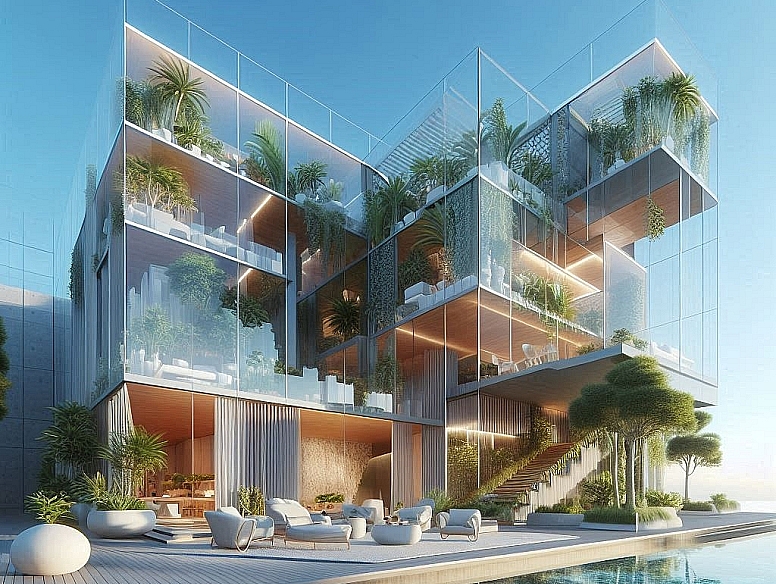
Technological Advancements
The future of plexiglass in architecture is being shaped by several technological advancements that enhance its performance and broaden its applications:
- Smart Plexiglass: Developments in smart materials are leading to the creation of plexiglass that can change its properties based on environmental conditions. This includes electrochromic plexiglass, which can adjust its opacity to control light transmission and privacy.
- Enhanced UV Resistance: Continued improvements in UV-resistant coatings and formulations are making plexiglass even more durable and suitable for outdoor applications. This extends the material's lifespan and maintains its clarity over time.
- Nano-coatings: The application of nanotechnology in plexiglass production results in surfaces that are more scratch-resistant, anti-reflective, and easier to clean. These nano-coatings can significantly enhance the functional and aesthetic properties of plexiglass.
Emerging Design Trends
Architectural trends are also influencing how plexiglass is used in contemporary designs:
- Biophilic Design: The integration of natural elements into architectural spaces is driving the use of plexiglass to create seamless indoor-outdoor transitions. Large plexiglass panels and walls allow for unobstructed views of nature, enhancing the connection between interior spaces and their surroundings.
- Parametric Design: Advances in digital design tools and parametric modelling are enabling more complex and organic forms. Plexiglass, with its ability to be moulded and shaped into intricate geometries, is a key material in realizing these innovative designs.
- Minimalist Aesthetics: The trend towards minimalist and clean design aesthetics benefits from the use of plexiglass. Its transparency and ability to create uninterrupted surfaces align with the principles of minimalism, emphasizing simplicity and functionality.
Potential for Further Innovation
The versatility of plexiglass presents numerous opportunities for future innovation in architecture:
- Hybrid Materials: Combining plexiglass with other materials, such as metals or wood, can create hybrid structures that leverage the strengths of each material. This can lead to innovative architectural solutions that are both aesthetically pleasing and structurally sound.
- 3D Printing: The advent of 3D printing technology opens up new possibilities for custom plexiglass components. Architects can design and produce bespoke elements with complex shapes and integrated functions, pushing the boundaries of traditional construction methods.
- Sustainable Manufacturing: Ongoing research into more sustainable manufacturing processes, including the use of recycled and bio-based materials, will enhance the environmental credentials of plexiglass. This aligns with the broader movement towards sustainable architecture and responsible material sourcing.
Case Studies of Forward-Thinking Projects
To illustrate the potential of plexiglass in future architectural endeavours, consider the following hypothetical case studies:
- Urban Greenhouses: In urban environments, plexiglass can be used to create rooftop greenhouses and vertical farms. These structures can contribute to urban agriculture, providing fresh produce while improving the thermal performance of buildings through passive solar heating.
- Interactive Facades: Imagine a commercial building with a plexiglass façade that incorporates interactive elements. Integrated LEDs and sensors could allow the façade to display dynamic visual content, turning the building into a living canvas that responds to its environment and occupants.
- Modular Housing: Plexiglass could play a significant role in the design of modular housing units. Its lightweight nature and ease of fabrication make it ideal for prefabricated components that can be quickly assembled on-site, addressing the need for efficient and scalable housing solutions.
Plexiglass, or PMMA, has established itself as a versatile and valuable material in modern architecture. Its unique combination of physical properties, aesthetic qualities, and functional benefits make it an ideal choice for a wide range of applications. From residential skylights and commercial façades to public pavilions and innovative design elements, plexiglass enhances both the visual and practical aspects of architectural projects.
Key advantages of plexiglass include:
- Lightweight and Impact-Resistant: Reduces structural load and increases safety.
- High Transparency: Provides excellent natural light transmission and clarity.
- Durability and Weather Resistance: Ensures long-lasting performance in various environmental conditions.
- Versatility in Design: Allows for creative freedom with various colours, finishes, and forms.
Future Outlook
The future of plexiglass in architecture looks promising, driven by continuous technological advancements and emerging design trends. Innovations such as smart plexiglass, enhanced UV resistance, and nano-coatings will further enhance its performance and broaden its applications. Trends like biophilic design, parametric modelling, and minimalist aesthetics will continue to influence how architects incorporate plexiglass into their projects.
As sustainable architecture becomes increasingly important, plexiglass will play a crucial role due to its recyclability, energy efficiency, and potential for sustainable manufacturing processes. The integration of hybrid materials, 3D printing, and bio-based options will further solidify its place in environmentally responsible design practices.
Plexiglass offers architects and designers a material that combines functionality with elegance. Its ability to transform spaces with light, transparency, and durability makes it a compelling choice for modern architectural projects. As we look to the future, the ongoing innovation in plexiglass technology and its applications will undoubtedly lead to even more exciting and groundbreaking designs.
Embracing the potential of plexiglass means not only enhancing the aesthetic and functional qualities of buildings but also contributing to more sustainable and forward-thinking architecture. As we continue to explore and push the boundaries of what is possible with plexiglass, it will remain a cornerstone of modern design, shaping the built environment in ways that are both beautiful and practical.





